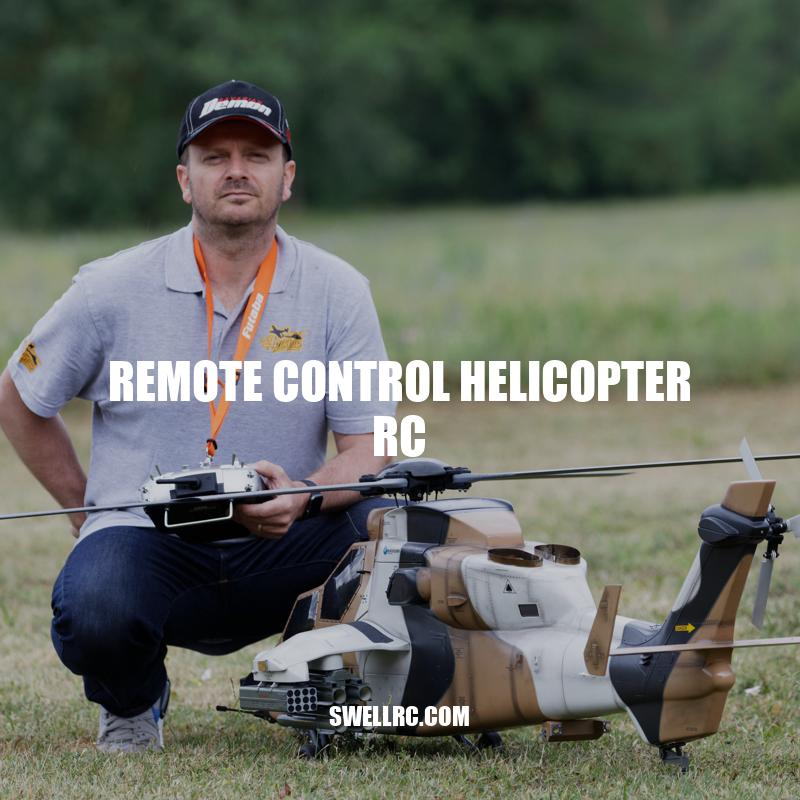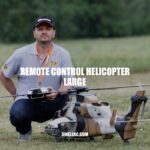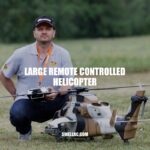Remote Control Helicopters: A Comprehensive Guide
Remote control helicopters are a popular hobby among enthusiasts of all ages. With their ability to fly both indoors and outdoors, remote control helicopters offer a unique and exciting experience. These machines come in different types and sizes, ranging from miniature toy helicopters to highly advanced models equipped with cameras and LED lights. Whether you are a beginner or an experienced flyer, there is a helicopter for everyone. Learning to fly a remote control helicopter requires patience, practice, and mastery of basic controls and maneuvers such as throttle, pitch, roll, and yaw. Choosing the right helicopter for your skill level and environment is also important to ensure a safe and enjoyable experience. Remote control helicopters require regular maintenance and upkeep to maintain their peak performance. Proper care can help extend the lifespan of the machine and provide a safer flying experience for both the pilot and potential bystanders. In this article, we will take a closer look at remote control helicopters, how to fly them, choose the right helicopter, and care for them.
How to Fly Remote Control Helicopters
Flying a remote control helicopter requires both skill and patience. Here are some tips on how to fly one:
Basic Controls
- Throttle: controls the altitude of the helicopter
- Pitch: controls the rotor blade angle for movement forward or backward
- Roll: controls the helicopter’s lateral movement left or right
- Yaw: controls the helicopter’s rotation left or right
Maneuvers
- Lifting off
- Hovering
- Forward flight
- Backward flight
- Side-to-side flight
It’s important to start with the basics and practice hovering and landing before moving on to more advanced maneuvers. There are many resources available online to help guide beginners through the process of learning. Some popular websites that offer tips and tutorials include RCGroups and HeliFreak. Don’t be discouraged if it takes time to get the hang of flying, as it often takes practice and patience to become proficient. Consider purchasing a simulator program or a toy helicopter for indoor practice.
How hard is it to fly a remote control helicopter?
Flying a remote control helicopter can be challenging, especially for beginners. Here are some factors to consider:
- Experience: If you have never flown a remote control helicopter before, it can be difficult to get the hang of it.
- Controls: Remote control helicopters require precise and coordinated control inputs, which can be tricky to master.
- Environment: Windy conditions or obstacles can make flying a remote control helicopter even more difficult.
However, with practice and patience, anyone can learn to fly a remote control helicopter. There are also many resources available online, including instructional videos and forums, to help beginners get started. Some popular brands that offer easy-to-fly remote control helicopters for beginners include Syma, Blade, and WL Toys.
Choosing the Right Remote Control Helicopter
When it comes to choosing a remote control helicopter, there are a few factors to consider:
Experience Level
- Beginners: Coaxial helicopters
- Intermediate: Fixed pitch helicopters
- Advanced: Collective pitch helicopters
Environmental Considerations:
- Indoors: smaller and more maneuverable helicopters
- Outdoors: larger helicopters with better wind resistance
Cost vs Quality:
When it comes to price, keep in mind that higher-end models may be more durable, come equipped with advanced features, and have a longer battery life. It’s important to weigh the cost versus quality and choose based on individual needs and preferences.
Interesting Fact:
Did you know that the Guinness World Record for the largest RC helicopter has a rotor diameter of 24.6 ft and weighs 265 pounds?
Before making a purchase, research different models and brands to find the best fit. Online hobby stores such as Horizon Hobby and Tower Hobbies offer a wide selection of remote control helicopters and can provide more information on the different types and features available.
| Type of Remote Control Helicopter | Description |
|---|---|
| Coaxial Helicopter | Good for beginners; less maneuverable but more stable |
| Single Blade Helicopter | Advanced; more maneuverable but less stable |
| Fixed Pitch Helicopter | Intermediate; rotor blade angle is fixed, limiting agility |
| Collective Pitch Helicopter | Advanced; rotor blade pitch can be adjusted for greater agility |
What is the recommended remote control helicopter?
If you are looking for a recommended remote control helicopter, consider the following options:
- Blade Nano CPS: A beginner-friendly option that’s easy to fly and has excellent stability.
- Holy Stone HS100D: A drone with a sleek design, a long battery life and a high-quality camera that captures amazing aerial views.
- DJI Phantom 4 Pro: An advanced drone that delivers top-notch performance, a high-resolution camera, stability and obstacle detection – this is recommended for professional use.
You can find these models and more on websites like Amazon or Best Buy. It’s recommended to do your research and read reviews before making a purchase.
Caring for Your Remote Control Helicopter
Proper care and maintenance are essential to keep your remote control helicopter functioning smoothly. Here are some tips on how to care for your RC helicopter:
Regular Maintenance
- Clean your RC helicopter after each use using a soft, dry cloth
- Lubricate the gears for smoother movement
- Check and replace batteries as needed
- Perform repairs as necessary
Storage
- Store in a safe location such as a carrying case or soft padded bag
- Avoid exposing your RC helicopter to harsh weather conditions or direct sunlight
- Ensure that your helicopter is powered off and the battery is removed before storing
Online Resources
For more information on maintenance and repairs, online resources such as RCGroups and RC Universe offer forums and discussions on remote control helicopter maintenance and troubleshooting.
Keep in mind that preventative maintenance can save you time and money in the long run. By following these care tips, your remote control helicopter will have a longer lifespan and ensure a safer flying experience.
How do you store RC helicopters?
- Keep the landing gear on and propellers in place to prevent damage to the rotor blades.
- Store in a cool and dry place to prevent damage from moisture and humidity.
- Use a protective case or cover to prevent dust buildup and scratches.
- Secure any loose parts, such as batteries or remote controls, to prevent loss or damage.
For more information on RC helicopter maintenance and storage, check out websites such as RC Groups or RC Universe, or consider purchasing storage products specifically designed for RC enthusiasts, such as a carrying case or wall mount.
Conclusion
In conclusion, flying a remote control helicopter can be an enjoyable hobby for individuals of all ages. From indoor flying to outdoor adventures, there are plenty of different types of remote control helicopters available to match your skill level and budget. While purchasing a remote control helicopter can be intimidating, by understanding the basics of flight, choosing the right helicopter, and practicing proper care and maintenance, you can enjoy this exciting hobby for years to come.
Whether you enjoy flying alone or with friends, remote control helicopters can provide hours of entertainment and skill-building. With the help of instructional videos and online resources, you can learn to perfect your flying skills and create unique stunts and tricks that will impress others. So why wait? Get your hands on a remote control helicopter today and take to the skies!



